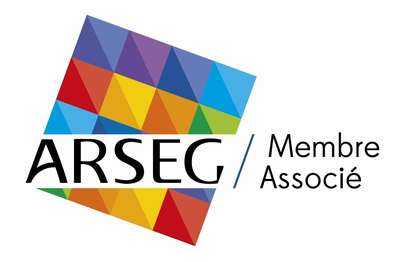
Employees still believe in the office. But which office are we talking about? And why go back? 5 ways to make the office more attractive.
There is no longer any need to confine work to the four walls of an office: teleworking works! This is indeed the great discovery of the health crisis. We have all (re)proved it, even in poor conditions. Reduced fixed costs, less fatigue, time savings, increased productivity, greater autonomy: there is no need to dwell on these advantages once again. According to a national survey conducted by the CGT statisticians of the Dares and DREES, 98% of French people want to continue teleworking.
However, not going back to the office as before does not necessarily mean dreaming of a different world. Ideally, 67% of under-35s would like to work in the office most of the time. The reasons given? Social life with colleagues (49%) or the fact of working more efficiently (42%) and together on projects (33%). The crisis has therefore not signed the death warrant of the office. It has rather accentuated the question of its role, postponing until tomorrow the advent of an "all-telework" world.
Neighbourhood, service offer, natural environment, human relations: the office is now conceived in its global environment. It is even required to 'do good' for employees. This no doubt explains why 68% of the under-35s make it a criterion of choice before joining any other company. In February 2020, only 50% of them gave it this much importance*. " Why am I coming?" is therefore a question that companies are more than ever being asked to answer. And to do so, HR teams will have to tackle five priority areas.
"Why do I come? "1 question, 5 ways to answer it
1. Flexible office
The health crisis has helped to democratise hybrid working. It has also brought the "flex office" back into fashion, a concept adopted in the 1990s by many consultancies. Its innovation? To take into account the new situation that has consigned the sacrosanct 9 to 6 working hours standard to the dustbin of history. It is no longer simply a question of removing the photo frames from the open spaces. The new layout of spaces must be accompanied by a real reflection on the organisation of work and its impact on the health and motivation of employees. This is all the more important in this post-pandemic period, as the flex office is a source of concern for employees who are not very reassured by the idea of sharing their office. But solutions do exist. On site, stress would be reduced for 62% of employees** if an air purification system were installed. Today more than ever, it is time for flexi-safety!
2. Healthy and ergonomic office
Indeed, the flex office should not be adopted at the expense of employees' health and comfort. With it, as with the development of hybrid work, the question of employee well-being becomes even more concrete. Strategies to boost the resilience of offices in the future will therefore have no choice but to address this issue by offering healthy workspaces or by improving the quality of air at work. In other words, the biosafety revolution must be anticipated today. This also means optimising the ergonomics of 3.0 offices. The French National Institute for Research and Safety (INRS) therefore recommends giving preference to equipment that is adjustable in height and depth and opting for an independent keyboard and an ergonomic mouse when using a laptop. Alternating postures is also an excellent idea. And not just for your health! According to a study by Texas A&M University, a sit-stand desk can increase productivity by up to 46%. If you combine this with good indoor air quality, the effects will be multiplied!

3. Useful office
Tomorrow, offices will have to take note of the transformation of our relationship with space. More modularity, more openness to the outside world: the user and nature will be at the heart of office spaces. The latter will have to be able to accommodate four main activities: collaborative work, which requires meeting rooms that can be modulated according to needs; solitary work, which requires silence and concentration; the celebration of key moments in the company, which will be held in spaces for festive sharing; and, finally, informal exchanges, which must extend beyond the single (and infamous) coffee machine. This new geography corresponds to the map of wishes expressed by employees. Thirty-three per cent of employees think that more convivial spaces should be created in the workplace, such as bars, dining areas, gardens and terraces. 31% think that they should be given the opportunity to have fun. A quarter would like to be able to play sports during their working hours***.
4. World Bureau
Be careful, however, not to launch the projects mentioned above all at the same time and in all the company's subsidiaries. The perception of the added value of the office can change depending on the business and, above all, the location. While 87% of French people point to 'the possibility of meeting colleagues and working physically with them' as the factor that most encourages them to spend time in the office, this is not the case for all Europeans. Having 'more opportunities to socialise' or 'knowing my colleagues are there' count for 27% of Swedes and 39% of Dutch respondents respectively. In addition to socialising opportunities, the British much prefer 'the possibility of working anywhere'. What about the Poles? Seventy-one per cent of them cite "the possibility of working flexibly without fixed hours "* as their first choice. This means that human resources departments will have to do a lot of consulting to adapt offices to national preferences...
Lessons from the health crisis
- The office is dead, long live office 3.0!
- Tomorrow's office will evolve in a VUC world
- The post-covid office does not compromise on QWL or air quality
5. Showcase office
... while ensuring that, wherever in the world, the office reflects the company's vision. The challenge? To guarantee better reception conditions than before, in terms of layout but not only. As teleworking time is set to increase, offices must become places of acculturation. This implies accompanying, coaching and guiding the new arrivals. How, however, can this be achieved if the offices are far removed from the company's raison d'être? For example, if the company's commitment to society and the environment is not accompanied by healthy offices, it may not work . More broadly, the post-Covid office is evolving in a "VUCA" world, which means volatile, uncertain, complex and ambiguous. Indeed, if the crisis has taught us anything, it is that there are very few certainties. It is difficult, in these conditions, to commit to long leases when you know nothing about your needs, your workforce or even the health situation in the next six months. The crisis has actually taught us something else: compromising on the physical, psychological and health security of the teams is no longer allowed. We might as well offer them clean office space. How can we do this? By equipping themselves now with technologies such as UV-C that are easy to install and combine design, autonomy and efficiency.
Marianne Fougère
* Paris Workplace, "Les salariés jugent leurs bureaux", Baromètre 2021.
** McKinsey, "Returning to work: Keys to a psychologically safer workplace", June 2021.
*** OpinionWay survey of 1,003 employees, conducted for the performance and talent management platform Elevo.






